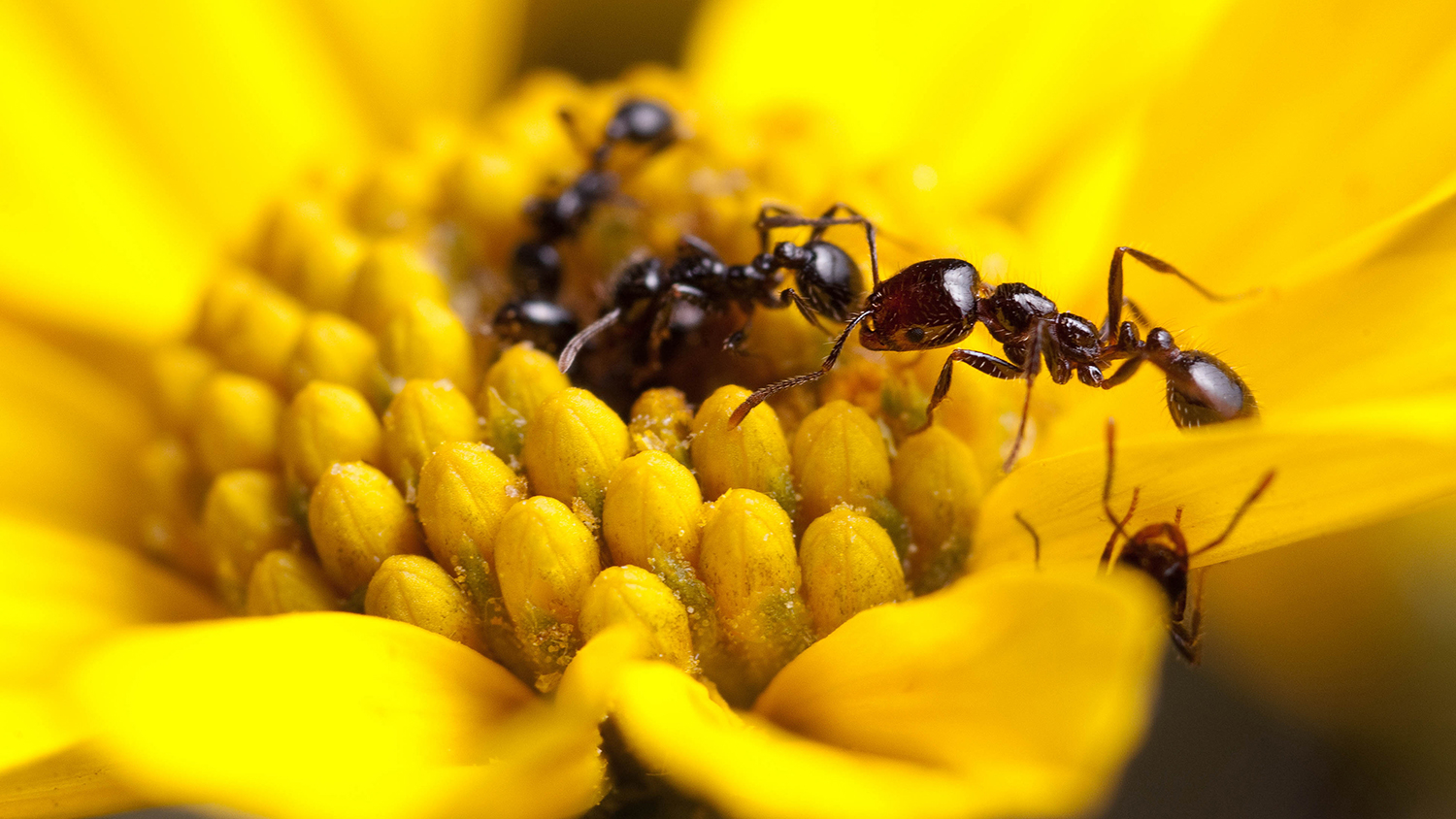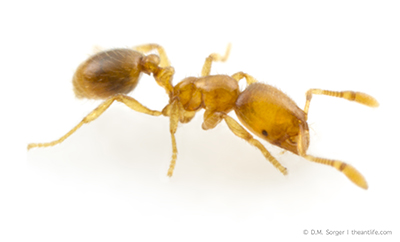Study Sheds New Light On Antibiotics Produced by Ants

Ants, like humans, deal with disease. To deal with the bacteria that cause some of these diseases, some ants produce their own antibiotics. A new comparative study identified some ant species that make use of powerful antimicrobial agents – but found that 40 percent of ant species tested didn’t appear to produce antibiotics. The study has applications regarding the search for new antibiotics that can be used in humans.
“These findings suggest that ants could be a future source of new antibiotics to help fight human diseases,” says Clint Penick, an assistant research professor at Arizona State University and former postdoctoral researcher at North Carolina State University who is lead author of the study.

“One species we looked at, the thief ant (Solenopsis molesta), had the most powerful antibiotic effect of any species we tested – and until now, no one had even shown that they made use of antimicrobials,” says Adrian Smith, co-author of the paper, an assistant research professor of biological sciences at NC State and head of the NC Museum of Natural Sciences’ Evolutionary Biology & Behavior Research Lab.
For this study, researchers tested the antimicrobial properties associated with 20 ant species. They did this by using a solvent to remove all of the substances on the surface of each ant’s body. The resulting solution was then introduced to a bacterial slurry. The growth of the bacteria in the slurry was then compared to the growth of bacteria in a control group. Note: a video about this research can be found here: https://youtu.be/myNxDOC3uxM
If bacteria in a slurry that contained ant solution grew less than the control group, that meant that an antimicrobial agent was at work. For example, the slurry containing thief ant compounds showed no bacterial growth at all.
The researchers found that 12 of the 20 ant species had some sort of antimicrobial agent on their exoskeletons – including some species, like the thief ant, that hadn’t previously been shown to do so. But eight of the ant species seemed not to make use of antibiotics at all. Or, at least, any antimicrobials on their exoskeletons were ineffective against the bacteria used in the study.
“Finding a species that carries a powerful antimicrobial agent is good news for those interested in finding new antibiotic agents that can help humans,” Smith says. “But the fact that so many ant species appear to have little or no chemical defense against microbial pathogens is also important.”
That’s because the conventional wisdom has long been that most, if not all, ant species carry antimicrobial agents. But this work indicates that the conventional wisdom is wrong.
“We thought every ant species would produce at least some type of antimicrobial,” Penick says. “Instead, it seems like many species have found alternative ways to prevent infection that do not rely on antimicrobial chemicals.”
“The fact that not all ants use antimicrobials highlights the importance of refining our search for species that actually do hold promise for biomedical research,” Smith says.
“For example, the thief ant is closely related to the red imported fire ant (Solenopsis invicta), which is well known for the antimicrobial properties of its venom. But in our study, we found that the thief ant was even more effective against bacteria than the fire ant. There may be other species in the same genus that are worth studying for their antimicrobial potency.”
The researchers caution that this study is a first step, and that this study does have limitations. For example, the researchers used only one bacterial agent in their tests, meaning it is not clear how each species would fare against other bacteria.
“Next steps include testing ant species against other bacteria; determining what substances are producing the antibiotic effects – and whether ants produce them or obtain them elsewhere; and exploring what alternative strategies ants use to defend against bacterial pathogens,” Smith says.
The paper, “External immunity in ant societies: sociality and colony size do not predict investment in antimicrobials,” is published in the journal Royal Society Open Science. Co-authors include Omar Halawani, a graduate student at NC State; Bria Pearson, a former undergraduate at NC State; Stephanie Mathews, a former postdoctoral researcher at NC State who is now on faculty at Campbell University; and Margarita López-Uribe, a former postdoctoral researcher at NC State who is now on faculty at Penn State University.
The work was done with funding from the Triangle Center for Evolutionary Medicine and the National Science Foundation under grants 1523817, 0953390 and 1319293.
-shipman-
Note to Editors: The study abstract follows.
“External immunity in ant societies: sociality and colony size do not predict investment in antimicrobials”
Authors: Clint A. Penick, Arizona State University; Omar Halawani, Bria Pearson and Adrian A. Smith, North Carolina State University and the North Carolina Museum of Natural Sciences; Stephanie Mathews, Campbell University; Margarita López-Uribe, Pennsylvania State University; and Robert R. Dunn, North Carolina State University and University of Copenhagen
Published: Feb. 7, Royal Society Open Science
DOI: 10.1098/rsos.171332
Abstract: Social insects live in dense groups with a high probability of disease transmission and have therefore faced strong pressures to develop defenses against pathogens. For this reason, social insects have been hypothesized to invest in antimicrobial secretions as a mechanism of external immunity to prevent the spread of disease. However, empirical studies linking the evolution of sociality with increased investment in antimicrobials have been relatively few. Here we quantify the strength of antimicrobial secretions among 20 ant species that cover a broad spectrum of ant diversity and colony sizes. We extracted external compounds from ant workers to test whether they inhibited the growth of the bacterium Staphylococcus epidermidis. Because all ant species are highly social, we predicted that all species would exhibit some antimicrobial activity and that species that form the largest colonies would exhibit the strongest antimicrobial response. Our comparative approach revealed that strong surface antimicrobials are common to particular ant clades, but 40% of species exhibited no antimicrobial activity at all. We also found no correlation between antimicrobial activity and colony size. Rather than relying on antimicrobial secretions as external immunity to control pathogen spread, many ant species have likely developed alternative strategies to defend against disease pressure.
This post was originally published in NC State News.